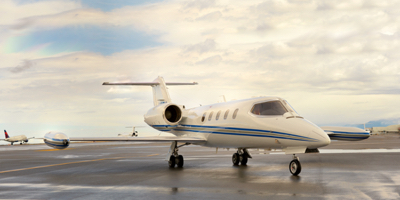
Jetting into History: The Learjet 35's Legacy of Innovation and Performance
Born from the iconic manufacturer Learjet, the Learjet 35 aircraft has etched a strong presence in the annals of aviation history. Let's explore this fascinating aircraft, from its inception to its modern-day utility, revealing its key features, innovative technologies, variants, and dedicated operators.
HISTORY
The Learjet 35 was introduced by Learjet, a subsidiary of Bombardier, in 1973. Designed to cater to the business aviation sector, this sleek twin-engine aircraft quickly became popular for its performance and adaptability. The Learjet 35 and its counterpart, the 35A, which was introduced in 1976, left an indelible mark on the aviation industry with a production run that spanned over two decades, culminating in 1994.
DESIGN
At a glance, the Lear 35 was a marvel of compact and efficient design. Its dimensions of 48.7 ft in length and a wingspan of 39.6 ft housed a surprisingly spacious cabin. The aircraft boasted a seating capacity for up to 8 passengers in a typical corporate configuration or could be modified to accommodate up to 14 in a high-density arrangement.
PERFORMANCE
The 35 didn't just look good; it delivered on the performance front as well. It achieved a top speed of 541 mph, a range of approximately 2,056 miles, and a service ceiling of 45,000 feet. This combination of speed, range, and altitude capabilities made the Learjet 35 an attractive choice for both business and military operations.
TECHNOLOGY
The Lear 35 was known for its cutting-edge technology and innovations, most notably its avionics and safety systems. The aircraft was equipped with advanced avionics, including a dual Collins VHF-20 COMM, VIR-30 NAV, dual TDR-90 Transponders, and a Sperry Primus 400SL color radar. Its propulsion system featured two Honeywell TFE731-2 turbofan engines, each capable of delivering 3,500 pounds of thrust.
VARIANTS
The LJ 35 has several variants, each designed for specific uses. The 35A, for example, had an extended range due to the addition of a large capacity fuel tank. The C-21A, a military version of the Learjet 35A, has been used by the United States Air Force for personnel transport since the 1980s.
OPERATORS
Many airlines, military organizations, and private operators have favored the Lear 35 for its versatility. Notably, the United States Air Force used the C-21A for high-speed, high-altitude airlift missions. Additionally, many private operators and charter services worldwide have included the Learjet 35 in their fleets for its reliability and performance.
In conclusion, the Learjet 35's notable blend of design, performance, and technological innovation has made it a memorable icon in aviation history. Share this journey through time with fellow aviation enthusiasts, and appreciate the legacy left behind by this extraordinary aircraft.
Learjet 35 Specifications and Performance Data
| Aspect | Detail |
|---|---|
| Manufacturer | Learjet |
| Introduction Date | 1973 |
| Length | 48.7 ft |
| Wingspan | 39.6 ft |
| Seating Capacity | Up to 8 (corporate), Up to 14 (high-density) |
| Top Speed | 541 mph |
| Range | 2,056 miles |
| Altitude | 45,000 ft |
| Engines | 2x Honeywell TFE731-2 turbofan |
| Engine Thrust | 3,500 lbs each |
This article uses material from various web resources and Wikipedia article, released under the Creative Commons Attribution-Share-Alike License 3.0.

